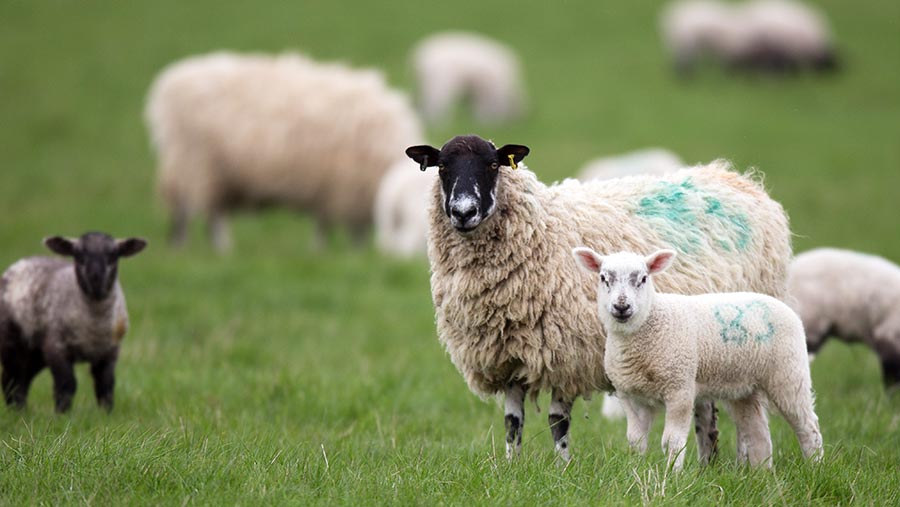Q&A: How to treat and prevent coccidiosis in lambs
 © Tim Scrivener
© Tim Scrivener When there is cold, wet weather in spring, grass growth is delayed and so the risk of coccidiosis in lambs is high.
Cold weather delays hatching, so any sudden changes in temperature in the spring can trigger a mass hatch.
If this coincides with lambs aged between six and 12 weeks grazing contaminated pastures for the first time in spring/early summer, severe production losses and even deaths may follow.
See also: 5 tips to tackle coccidiosis in the lambing season
Independent vet Harriet Fuller answers your questions on the disease and how to treat and prevent infection.
What is coccidiosis and how does it infect lambs?
Coccidiosis is one of the most common diseases in UK flocks, generally seen in lambs from three to eight weeks old. It is caused by coccidia, which are microscopic parasites living in the intestines of sheep.
There are 15 different species that infect lambs, but only two are pathogenic, and cause disease and significant clinical problems.
Coccidia oocysts are passed out in the faeces of infected lambs and can survive for long periods of time in the environment. In extensive grazing systems, lambs may be exposed to low numbers of coccidial oocysts and develop a natural immunity without suffering any disease.
However, in more intensive systems lambs may be exposed to very high numbers of oocysts before they have developed natural immunity, which if left untreated could be fatal.
What are the symptoms of cocci infection?
Pathogenic species of coccidia damage both the small and large intestines, causing scour, often with mucous and blood, abdominal pain, straining, weight loss and dehydration.
Clinically affected lambs may die or become permanently ill due to irreversible damage in their intestines.
When lambs ingest infectious oocysts there is a period before clinical signs appear, which normally lasts for two to three weeks depending on the species of cocci present, so treating during this early phase of disease is most effective.
Can I test for the presence of cocci on farm?
Lambs are most susceptible to cocci when aged between four and eight weeks, so if scouring is seen, cocci is a possible cause. Faecal oocyst testing is advised, with microscopic examination of faeces helping to diagnose infection and determine if the species present is pathogenic.
This sampling and testing can be done through your veterinary practice.
If you have dead lambs that have been scouring, a post-mortem examination can provide a definitive diagnosis.
What factors increase the risk of infection?
High stocking rates increase infection risk, along with muddy and wet conditions and poor grass availability.
Risk is also increased if ewes are short of milk, as lambs begin to nibble at potentially contaminated straw. It’s important to keep lambs in similar age groups so young lambs don’t pick up infection from older, infected lambs.
What can I do if my lambs are infected?
If there is a known history of cocci on the farm, disease prevention is highly recommended rather than waiting for clinical signs to appear. Ideally, lambs should be treated when they have picked up some coccidia, but before they are at a damaging level.
This will usually mean treating lambs at four to five weeks of age. An effective treatment is a single dose of a toltrazuril drench, given to all lambs.
How can I prevent future infection?
Measures can be taken to reduce risk, such as keeping indoor lambs in clean environments and avoiding high stocking densities.
If outdoors, ensure ewes are fed well and move feeders regularly to avoid mud build-up around them.
It is also important to try to avoid putting young lambs where others have grazed the previous season to minimise the risk of contamination on the pasture.
